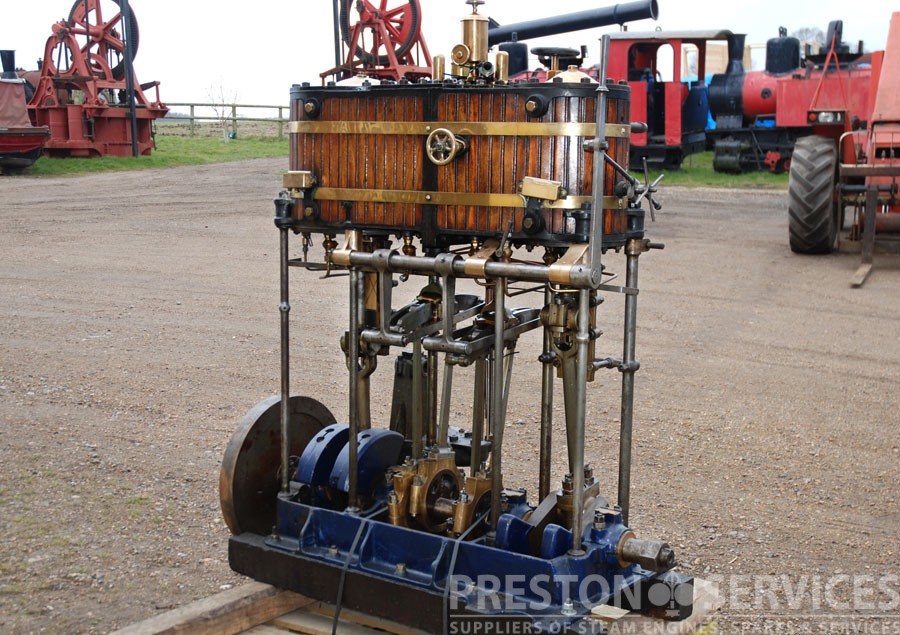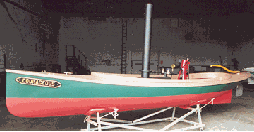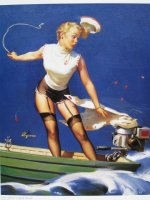Lester Bowman
Hot Rolled
- Joined
- Apr 9, 2011
- Location
- Modesto california USA
Here are pictures of a wonderful little steam plant which was originally found in a warehouse in Manteca California years ago. Manteca is near the San Joaquin Delta and I believe it was used here as the Porcupine boiler shows no salt encrustation when peering into the blowdown pipe.
Incredibly complete with an engine with the California bear cast into the steam chest. I haven't measured the bore and stroke yet but I would say 2" x 3" stroke. It has Stevenson's reverse gear fitted. The governor is an anomaly for a steam launch engine but has the same age as the engine.There is a bronze feed water pump bolted to the engine with the ram connected to the cross head..a stroke for every revolution. A small 6" diameter "dog leg" spoked flywheel is fitted.
The fittings are all early style as you can see. Weighted safety valve and cocks of a very early pattern. It also has a water hand pump for secondary water feed.It has an early steam cylinder lubricator fitted.
The boiler from what I can see is a "Porcupine" boiler with the tubes in a " Bottlebrush " pattern.From what I can see at this point the tubes and central header pipe appear to be in good condition. The wrapper is pretty rusty but has protected the internals all these years. Here are some pics...
Incredibly complete with an engine with the California bear cast into the steam chest. I haven't measured the bore and stroke yet but I would say 2" x 3" stroke. It has Stevenson's reverse gear fitted. The governor is an anomaly for a steam launch engine but has the same age as the engine.There is a bronze feed water pump bolted to the engine with the ram connected to the cross head..a stroke for every revolution. A small 6" diameter "dog leg" spoked flywheel is fitted.
The fittings are all early style as you can see. Weighted safety valve and cocks of a very early pattern. It also has a water hand pump for secondary water feed.It has an early steam cylinder lubricator fitted.
The boiler from what I can see is a "Porcupine" boiler with the tubes in a " Bottlebrush " pattern.From what I can see at this point the tubes and central header pipe appear to be in good condition. The wrapper is pretty rusty but has protected the internals all these years. Here are some pics...



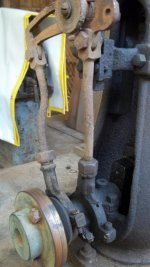




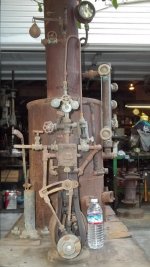
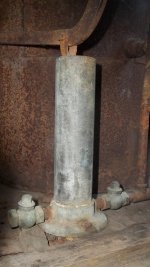


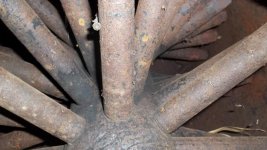

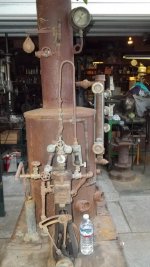




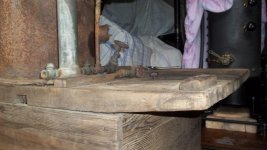

.jpg)




